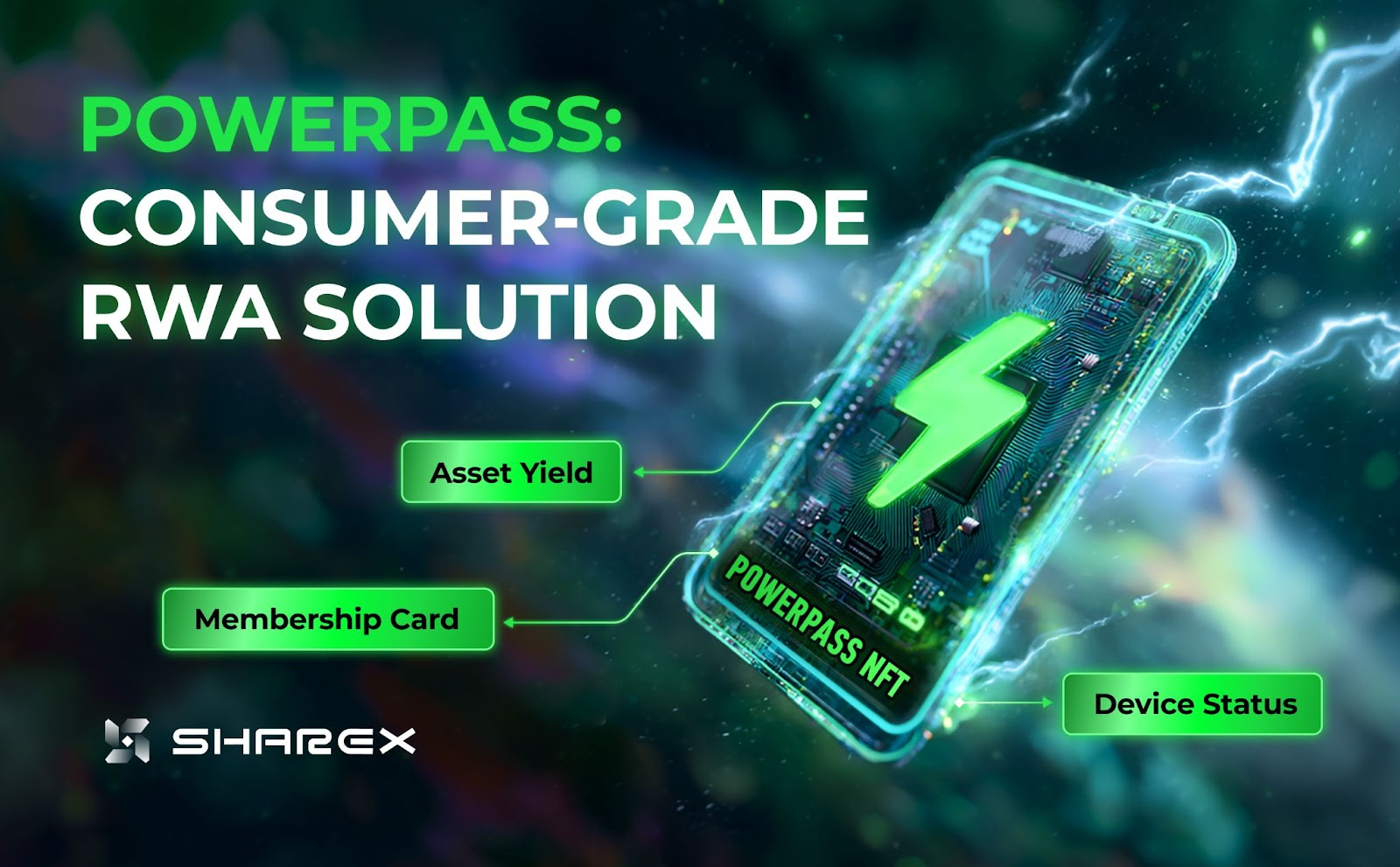Every profitable "unmanned commercial device" becomes a "verifiable on-chain asset"
Subway stations, convenience stores, shopping malls, restaurants, KTVs, community street corners—every day you pass by a batch of unmanned commercial devices that are shared: shared power bank cabinets, vending machines, lockers, scooters, battery swap cabinets… These "quietly profitable" small devices interact frequently with people, continuously generating measurable cash flow, yet have never truly opened up to the general public.
This dilemma is a common issue faced by all unmanned commercial devices in the sharing economy—they can be used, but it is very difficult to participate in their value distribution in a fair, transparent, and verifiable manner.
The Dilemma and Missteps of the Sharing Economy
The business model of the sharing economy has gradually entered mainstream commercial narratives over the past 15 years with the rise of platforms like Uber and Airbnb. This model essentially revolves around several core elements:
- Reutilization of idle assets or idle periods of assets;
- Clear separation of usage rights and ownership;
- Users pay fees for the usage rights of assets, while owners earn income from asset ownership;
- The key to whether the model can be established lies in whether matching efficiency and fulfillment costs are significantly optimized.
The fundamental value of the sharing economy lies in increasing the usage frequency and turnover rate of existing assets to meet more user demands with a lower total social supply. From the perspectives of macroeconomics, microeconomics, ESG, and sustainable development, the sharing economy is a more efficient and valuable way to organize social resources.
In the context of the current global economic cycle, the sharing economy model not only aligns with the principles of economic efficiency but also fits the strategic direction of environmental sustainability. ShareX firmly believes that as long as innovative solutions emerge that can significantly improve matching efficiency and reduce fulfillment costs, new growth potential will be unleashed, leading to sustained growth in model dividends.
However, many models currently marketed as "sharing economy" are essentially closer to "platform rental economy." This is reflected in several issues:
- Centralized asset supply methods: Assets are usually centrally procured, deployed, and managed by platforms or brand owners;
- Platform data black box phenomenon: Pricing, order data, and income distribution are completely controlled by the platform, with low data transparency and difficulty in verification;
- Asset waste caused by competition: Continuous new asset investments for scale expansion rather than effectively revitalizing existing idle assets.
These issues invariably have a negative impact on matching efficiency and fulfillment costs. Solving these problems is precisely where blockchain technology and Web 3 solutions can play a significant role.
ShareX's Exploration: Consumer-grade RWA Solution - PowerPass
The problem with the sharing economy is not "lack of value," but rather "the distribution method of value is not good enough." To truly return value to those who create it, a new asset paradigm is needed.
ShareX refers to this as consumer-grade RWA (Consumer-grade RWA). Consumer-grade RWA has two layers of meaning:
- First: "Consumer-grade" in terms of price
Compared to large assets like government bonds, real estate, and publicly traded company shares, consumer-grade RWA focuses on the long-ignored "micro-asset" layer: a single vending machine, a single power bank, a single scooter, a single battery swap service… They are visible in daily life, cash flows are measurable, distribution is feasible, and they can be combined, with the minimum unit price of assets being affordable for ordinary users. This asset layer has long been a blind spot in traditional RWA narratives.
- Second: Integration of consumption and investment, being both "investment products" and "consumer products"
Consumer-grade RWA carries rights through NFTs, converging off-chain usable Web 2 rights (usage rights, even ownership) with on-chain verifiable RWA income (income rights) into the same asset. Using it is consumption, while sharing or operating to earn income is investment: when users use it themselves, they exercise consumption rights; when users open the device to the sharing network, they begin to receive verifiable asset income distribution. This is entirely consistent with the inherent logic of the sharing economy.
PowerPass is ShareX's first consumer-grade RWA product, based on the shared power bank scenario, supported by real devices and businesses from Deshare Alliance member PowerNow in Japan.
- From the investment logic of RWA
Users receive a PowerPass NFT issued by ShareX. Each NFT corresponds one-to-one with real assets deployed in the market (Real power banks), and key events such as usage, return, and rental by others will trigger verifiable on-chain records and distribution logic, allowing users to see not just "screenshots and reports," but auditable distribution trajectories.
- From a more traditional consumption logic
It is equivalent to users "purchasing" a physical power bank once and receiving a light membership service with unlimited free battery swaps for a year (or it can also be understood as after-sales service that allows swapping any power bank, renewable annually), without forcing a change in existing perceptions and usage habits; users can also temporarily return the power bank, allowing it to enter the sharing network, transitioning to an investment logic that brings profit sharing.

PowerPass does not simply put receipts on-chain; rather, it fully restores the inherent logic of the sharing economy on-chain, making distribution verifiable. In summary, the essence of PowerPass is: a one-time buyout of device assets + offline self-use consumption rights + shared usage RWA income.
From Consumer-grade RWA to On-chain Micro-Asset Network
By comparing with familiar paradigms in current narratives, it is easier to understand the innovativeness of PowerPass as a consumer-grade RWA.
- Compared to DePIN: ShareX does not focus on a supply-side logic of "coverage/power → incentives," but starts from real usage events, directly clearing cash flow to personal wallets;
- Compared to mainstream RWA: ShareX does not first anchor large assets and then segment; instead, it works from the bottom up, using measurable micro-units to bridge the last mile of "large assets—individual participation";
- Compared to device finance/'financial credit based on operational receivables': ShareX is not driven by centralized revenue-sharing financing, but upgrades "financing—operation—distribution" to verifiable on-chain clearing and profit sharing, allowing rights down to "single device, single order, single time period" to enter combinations, transfers, and reconfigurations.
When PowerPass connects "self-use/sharing" and "income/distribution," the true leap of the sharing economy lies in organizing scattered devices into a network, further enhancing network efficiency. Through the Deshare Protocol and RWA Tokenization standards, ShareX upgrades each device to:
- An on-chain address entity: possessing independent data streams, asset IDs, and income rights structures;
- A liquid asset unit: capable of being split, pledged, traded, and integrated into larger financial structures;
- An on-chain behavior entry point: connecting users, geographical locations, and usage habits, becoming a bridge between IRL and Web 3.
Devices are not just assets; they are the smallest neurons of the asset network. When thousands of nodes are connected by the same event model, the network will exhibit three underlying attributes:
- Programmable: Rules for distribution, fees, priorities, limits, etc., are expressed in contracts and executed automatically according to scenarios;
- Composable: Cash flows from different cities, different categories, and different times can be repackaged according to risk/duration preferences;
- Auditable: From "who used it when and where" to "how income is distributed," the entire link is verifiable and reconcilable.
This means that users can no longer only hold "the future of a single device," but can combine "8 power banks around the shopping center + 4 vending machines at the subway station + 2 sets of lockers during nighttime in the business district" into a cross-scenario, cross-time cash flow product, supported by real traceable usage curves for valuation and risk control.
Isolated assets can only be traded, but structured asset networks can be valued. This structure not only possesses the composability of DeFi but also has the "behavioral drive" that traditional infrastructure investments lack.
This is just the beginning
Previously, ShareX has united over 20 leading global sharing economy brands to form the Deshare Alliance, covering 500,000 devices across 22 countries. The "Share to Earn" initiative TreasureX launched by ShareX has attracted over 900,000 users through more than 16,000 offline devices as entry points.
The launch of PowerPass is not about turning "RWA" into a new slogan, but rather bringing it back to everyone's daily life:
Making every real use a visible, traceable, and clearly distributable value distribution; allowing ordinary users to participate in the growth of offline physical assets with an affordable threshold; returning the sharing economy to its original intention: higher matching efficiency and lower fulfillment costs.
免责声明:本文章仅代表作者个人观点,不代表本平台的立场和观点。本文章仅供信息分享,不构成对任何人的任何投资建议。用户与作者之间的任何争议,与本平台无关。如网页中刊载的文章或图片涉及侵权,请提供相关的权利证明和身份证明发送邮件到support@aicoin.com,本平台相关工作人员将会进行核查。




